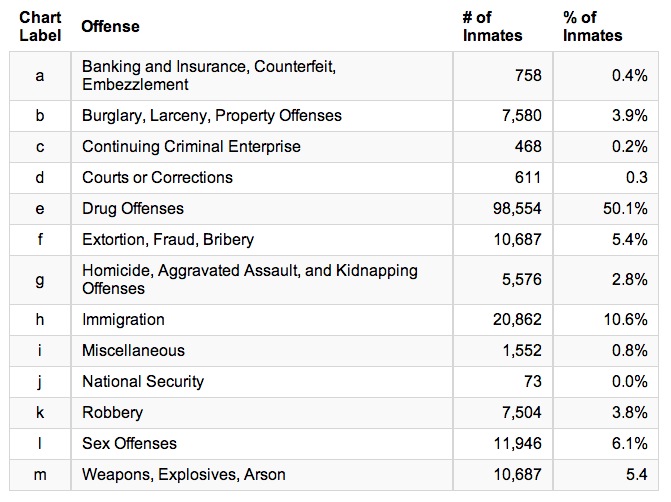Sample by My Essay Writer
One of the biggest issues with the current correctional system in America is the sheer number of criminals behind bars. Since the “war on drugs” was declared nationally in the early 1980s, national drug policies have created a state of mass incarceration in the United States. While fighting this war on drugs, the legal system has created laws that placed many non-violent criminals behind bars. Then, because of mandatory-minimum sentencing and three strikes laws, many of these convicts spent many years behind bars or were never released at all. Though the legal system in the United States has begun to offer more compassionate punishments and treatment for drug offenders, it has been difficult to implement these options because of sentencing standards put in place primarily in the 1980s. (Mauer, 2007)

In order to get a clear idea of the current situation, it is important to look at some drastic statistical changes that have taken place in the past three or four decades. According to a study by the National Center on Addiction and Substance Abuse (CASA) at Columbia University, drug offenses are by far the most expensive offenses for the prison system. They account for about 80 percent of state costs for prisons, parole, probation and other aid-related programs. There were 1.8 million drug-related arrests in the United States in 2005, nearly three times what it had been 25 years earlier. More than half of those arrested have no history of violence or drug trafficking. (Lawrence, 2011)[Need an essay writing service? Find help here.]
One of the biggest roadblocks in dealing with the mass incarceration issue in the United States is various sentencing laws that place non-violent criminals behind bars for exorbitant amounts of time. Bills were introduced in 2015 that would reduce mandatory prison sentence lengths for certain non-violent drug crimes. In a Bill introduced in 2015 as a proposed amendment to the Public Health Service Act, the Treatment and Recovery Investment Act would provide grants to improve the treatment of substance abuse disorders. This act would provide funding for treatment of those dependent on drugs. The act also reduces minimum mandatory sentences for non-violent drug crimes that do not include trafficking. (S. 1410, 2015) For example, rather than a five-year mandatory sentence for simple possession of 5 grams of crack, there would be no mandatory minimum, the sentencing would be within the purview of the judge.
In the past few decades, many states have tried to expand sentencing options in order to rectify some of the population issue. These programs may also help reduce recidivism as inmates will have an easier transition back into the outside world. In a report released by the National Conference of State Legislatures, the researchers discuss ways in which various programs have been implemented in an attempt to create more effective sentencing strategies. This places these new policies at a remove from the current ideas of being tough or soft on crime. In North Carolina has established a community-based corrections system that gives courts sentencing options like treatment programs and pre-trail release options. (Lawrence, 2011).

While these smarter sentencing options are available, they are often implemented very often or effectively. Convicts currently in prison with a history of drug use are less likely by half to be receiving treatment as they were 25 years ago. Most inmates who have entered prison within a month of doing drugs are not participating in any treatment. Just 14% in 2007, compared to 36.5% in 1991. (Mauer, 2007)[“Write my essay for me?” Get help here.]
While it is important to ensure public safety by keeping dangerous, violent, habitual criminals locked up, it is also important to be fair to everyone. The bills introduced could drastically reduce the over-inflated population of prisons, help avoid excessive sentences and also reduced recidivism. However, these sentence reductions would most likely not affect the vast disparity in the treatment of African Americans. In the first decade of this century, 88 percent of the 8 million arrests for marijuana were for simple possession. These numbers have only continued to increasing, costing states over $3.6 billion to enforce marijuana possession laws. Even though studies show that Blacks and whites use roughly the same amounts of marijuana, an African American is 3.37 times more likely to be arrested for marijuana possession. (ACLU, 2013) Not only is this racial inequality a major civil rights issues, it is yet more evidence that the war on drugs has been a fiscal disaster for the United States.[Click Essay Writer to order your essay]
Another suggestion often made to remedy the issues with the corrections system is to change the way success is measured by law enforcement agencies. By rewarding law enforcement agents based only on the number of arrests made, agencies are encouraging quantity rather than quality. Based on the current trajectory of prison populations, it is essential that individual agencies work together with federal lawmakers to reverse and correct the mass incarceration issues in America.
References
ACLU. (2013). The War on Marijuana in Black and White.
Lawrence, A., & Lyons, D. (2011). Principles of Effective State Sentencing and CorrectionsPolicy. Retrieved from National Conference of State Legislatures:
Mauer, M., & King, R.S. (2007). A 25-Year Quagmire: The War on Drugs and Its Impact on American Society.S. 1410, 114th Cong. (2015).
Wagner, P., & Rabuy, B. (2016). Mass Incarceration: The Whole Pie 2016.








